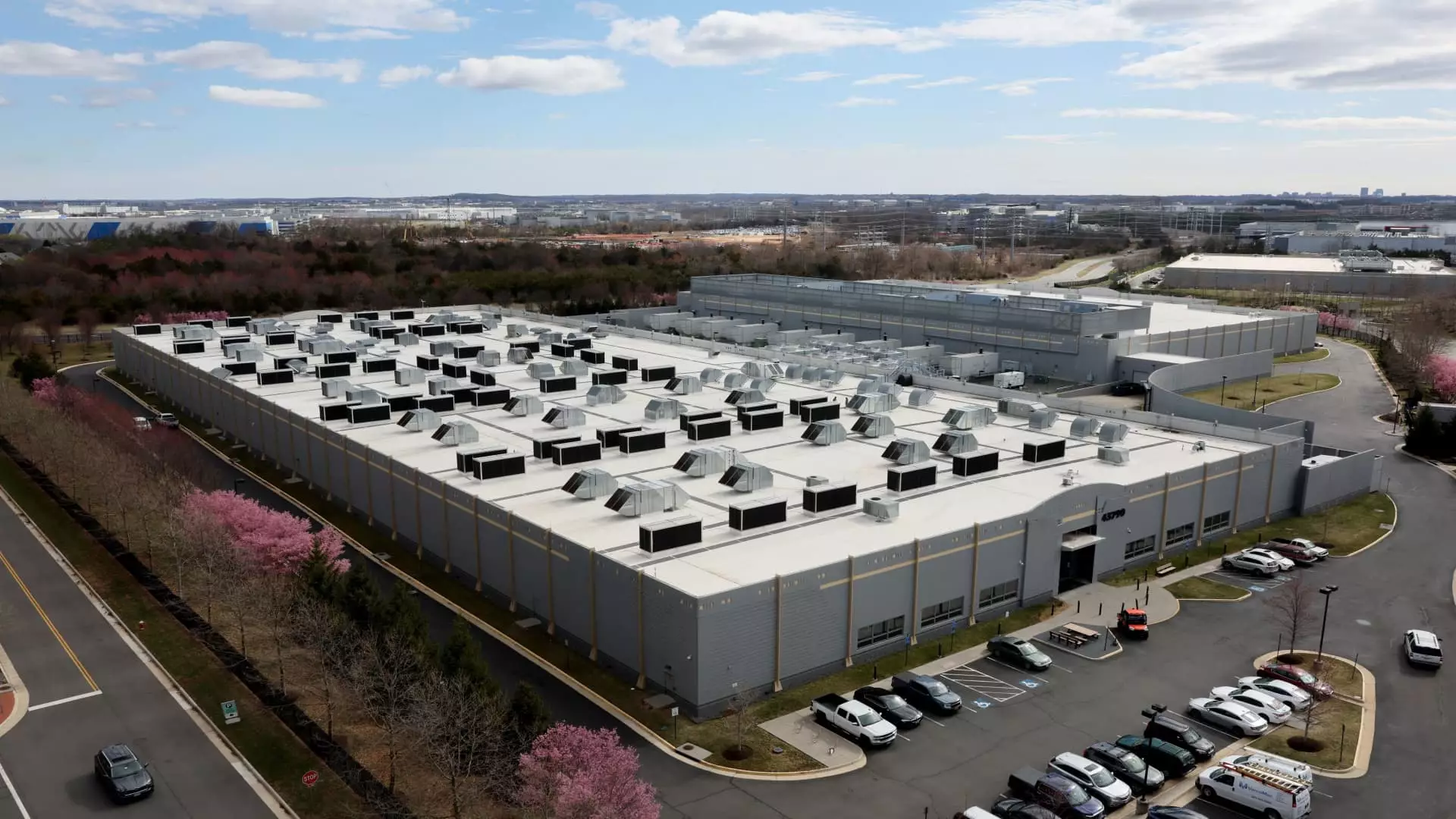In an unexpected twist, the alliance between Abu Dhabi’s sovereign wealth fund ADQ and American private equity firm Energy Capital Partners (ECP) has solidified a staggering $25 billion investment partnership aimed at revolutionizing the energy landscape, particularly in the United States. This partnership is touted as an urgent response to the increasing power requirements driven by tech giants and the burgeoning data center industry. With global energy consumption on an exponential rise, one can’t help but scrutinize the real implications of this strategic investment.
On paper, the initiative aims to bolster power generation capacity for data centers, hyperscale cloud services, and other energy-heavy industries. With the technological boom fostering demand for enormous computing power, one wonders if this monumental investment is a prudent response or merely a band-aid solution to a much deeper, systemic energy crisis. The equation is simple yet perplexing: as technology races ahead, the power grid and energy infrastructure lag significantly behind.
Escalating Demand and Environmental Consequences
Let’s not sugarcoat the reality: the U.S. power supply is in jeopardy. The increase in electricity demand, as highlighted in various reports, indicates we’re teetering on the edge of an infrastructure emergency. The expectation that data center electricity usage is poised to double or even triple by 2028 is inherently alarming. These facilities consume immense amounts of energy, leading to increased fossil fuel consumption unless sustainable energy practices become the norm rather than the exception.
As the world confronts climate change, this partnership presents a dichotomy. While the discussion of energy supply enhancement is crucial, it must also incorporate sustainability. The commitment to develop 25 gigawatts through new builds and current infrastructure expansions raises questions about the ecological footprint of such an endeavor. Will this initiative prioritize renewable sources, or will it lean heavily on traditional energy production methods that exacerbate environmental degradation?
The Frenzy Behind Artificial Intelligence Growth
The backdrop to this financial venture is equally significant. The pressure to dominate the AI sector has ignited a frenzied race among tech behemoths. In a landscape where organizations like Microsoft, Amazon, and Google vie for supremacy, the burgeoning demand for data centers presents an irresistible opportunity for investors like ADQ and ECP. However, this pursuit of technological prowess creates an unsettling irony: artificial intelligence—an innovation designed to enhance human capabilities—could concurrently usher in an energy crisis of its own making.
The move comes as the UAE is expanding its geopolitical aspirations, notably with increased investments in cutting-edge technologies. Sheikh Tahnoon bin Zayed Al Nahyan’s recent meetings in Washington, including with President Trump and Elon Musk, signal a desire not only for economic diversification but for the transition into AI leadership. Yet, this outward expansion raises ethical concerns regarding technology’s role in our lives. How does one ensure that the benefits of AI and data generation do not come at the detriment of sustainability and accessible energy?
The Clash of Economics and Ecology
With ADQ managing $249 billion in assets and ECP claiming to be the largest private owner of power generation assets in the U.S., the economic stakes are undeniably high. The proposed investment may seem like a lifeline in a time of energy scarcity, but the question remains: is this the right direction for economic growth?
To unleash over $25 billion in the energy sector without an emphasis on sustainability risks entrenching a dependency on outdated practices. While economic growth should naturally accompany technological advancements, it is essential to strike a balance between innovation and ecological responsibility.
For investors and policymakers alike, the focus on energy needs must evolve from mere supply to comprehensive solutions that consider long-term impacts on the environment and society. Building energy infrastructures that align with environmental standards should not be a secondary consideration but a fundamental part of the investment ethos.
In an age where every kilowatt hour is imbued with profound implications for our future, stakeholders must start asking tougher questions. The partnership between ADQ and ECP may represent a significant financial initiative, but if it lacks a vision for sustainability, it could become a symbol of missed opportunities—an investment that fuels the crises rather than solving them.



Leave a Reply